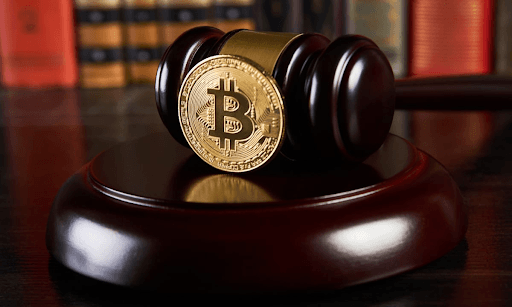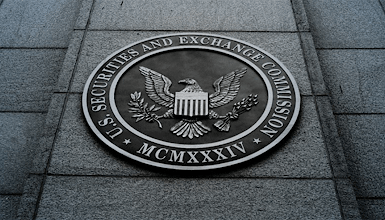Gary Gensler, the current head of the SEC, has one of the most powerful positions over the crypto community. His term lasts until 2026. In the next 5 years, he will play a pivotal role in a number of advancements in the crypto space for better and worse. As naturally forward thinkers, crypto stakeholders love to discuss and debate where the space will be in 5 years regulation-wise.
To pose an answer to this question, one of the clearest areas to draw conclusions from is understanding Gary Gensler’s current perspective. In just considering his background, one could draw the conclusion that Gensler is a gift to the crypto community. But just because he taught high-level collegiate courses on Bitcoin, blockchain, crypto, and finance does not mean he is automatically going to legislate in our favor.
In fact, there are a lot of good reasons to believe he will serve his term as a disciplinarian of the space, cracking down on gray areas that have quietly squeaked by for years. Today I examine his most recent speech on cryptocurrencies in hopes to draw some conclusions on where the space is headed in the next 5 years. Let’s dive in.
The Setting
The Aspen Security Forum hosts an annual conference designed for global leaders to speak on modern-day national security issues. These range from finance, trade, and international relations.
One of the designated speakers was Gary Gensler. He prepared a highly detailed response to the rise of cryptocurrencies and their role within government frameworks on behalf of the SEC. A lot of mixed reviews surfaced on his speech, ranging from positive praise to harsh criticism. I read through the speech and carefully picked out some of the most important segments below.
The Speech (The Important Parts)
“In that work (his time teaching), I came to believe that, though there was a lot of hype masquerading as reality in the crypto field, Nakamoto’s innovation is real. Further, it has been and could continue to be a catalyst for change in the fields of finance and money.”
“The SEC has a three-part mission — to protect investors, facilitate capital formation, and maintain fair, orderly, and efficient markets in between them. We focus on financial stability as well. But at our core, we’re about investor protection.”
“Right now, we just don’t have enough investor protection in crypto. Frankly, at this time, it’s more like the Wild West.”
“This asset class is rife with fraud, scams, and abuse in certain applications. There’s a great deal of hype and spin about how crypto assets work. In many cases, investors aren’t able to get rigorous, balanced, and complete information.”
“First, many of these tokens are offered and sold as securities.”
“I think former SEC Chairman Jay Clayton said it well when he testified in 2018: To the extent that digital assets like [initial coin offerings, or ICOs] are securities — and I believe every ICO I have seen is a security — we have jurisdiction, and our federal securities laws apply.”
“You see, generally, folks buying these tokens are anticipating profits, and there’s a small group of entrepreneurs and technologists standing up and nurturing the projects. I believe we have a crypto market now where many tokens may be unregistered securities, without required disclosures or market oversight.”
“A typical trading platform has more than 50 tokens on it. In fact, many have well in excess of 100 tokens. While each token’s legal status depends on its own facts and circumstances, the probability is quite remote that, with 50 or 100 tokens, any given platform has zero securities.”
“Given these important protections, I look forward to the staff’s review of such filings, particularly if those are limited to these CME-traded Bitcoin futures.”
“Certain rules related to crypto assets are well-settled. The test to determine whether a crypto asset is a security is clear.”
“At the heart of finance is trust. And at the heart of trust in markets is investor protection. If this field is going to continue, or reach any of its potential to be a catalyst for change, we better bring it into public policy frameworks.”

The Takeaways
I highly suggest you take the time to read his full speech. It is one of the clearest insights we currently have into the mind of the SEC’s chairman, who will largely dictate the path cryptocurrencies take moving forward. Below is my interpretation of his speech. Please remember, to each their own. This is only an opinion.
Let’s start with the good. Gary Gensler supports Bitcoin. He spent years teaching about it at MIT. Plus, he is an outspoken proponent of both the technology and financial mission of the asset. That being said, don’t forget he has a very specific role at the SEC. Above all else, his role is to protect investors. When your job’s main focus is to regulate securities, it is easy to slip into the mindset that every asset begins to look like a security or resembles one in some fashion. This is a good transition into some of the more critical considerations Gensler has for the space.
Gensler’s job is not to foster innovation or create friendly laws. He serves us by protecting us, whether we want that protection or not. Gensler is right to point out there is a lot of risk in the crypto market. This is why I stress over and over again that if you plan on investing in crypto, the majority of your allocation should be in Bitcoin and Ethereum. They are the two largest tokens with the most clarity. They also happen to be the only two cryptos not classified as securities by the SEC.
The Implications Of A Security Label on Cryptos
Gensler clearly believes the space is filled with securities. This is coming from someone who DOES understand blockchain, Bitcoin, cryptocurrencies, and DeFi at their core. Not convinced that he knows what he is talking about? There are over 20 hours of free high-level course material from Gensler teaching about the space.
If the SEC does not entertain the idea of editing our ancient security laws or their stance on cryptocurrencies, this could be bad for a lot of altcoins – potentially +90% of what is out there. A security label would be a nail in the coffin, especially if it came during a bear cycle. Receiving a security label brings unwanted compliance, penalties, formalities, potential jail time, lawsuits, delistings, and so many more problems.

That being said, I don’t believe a hammer will drop overnight. If and when the hammer falls, it will probably come slow and steady, giving us time to react and adjust. There has already been a lot of work done by regulators, in and out of the SEC, concerned about the broad labeling of securities on the crypto market. Hester Pierce, one of the current SEC commissioners in particular deserves a lot of credit on this front. Her Safe Harbor Proposal plan is working directly on this issue in our favor.
Assuming the arrival of this label, many altcoins will die. But those that survive will probably have defeated the final boss of regulation.
My Takeaway
- the market is still very much intact
- an ETF will eventually come
- holding the majority of your investments in Bitcoin and Ethereum is probably your safest play. (After all, these are the only two coins that have been officially declared not a security by the SEC.)
It’s imperative investors keep the possibilities mentioned above in mind when considering investments. It is always better to be safe than sorry.
On the topic of regulatory risk and impact, if GBTC interests you as an investor, then you should read How An ETF Could Impact GBTC.

